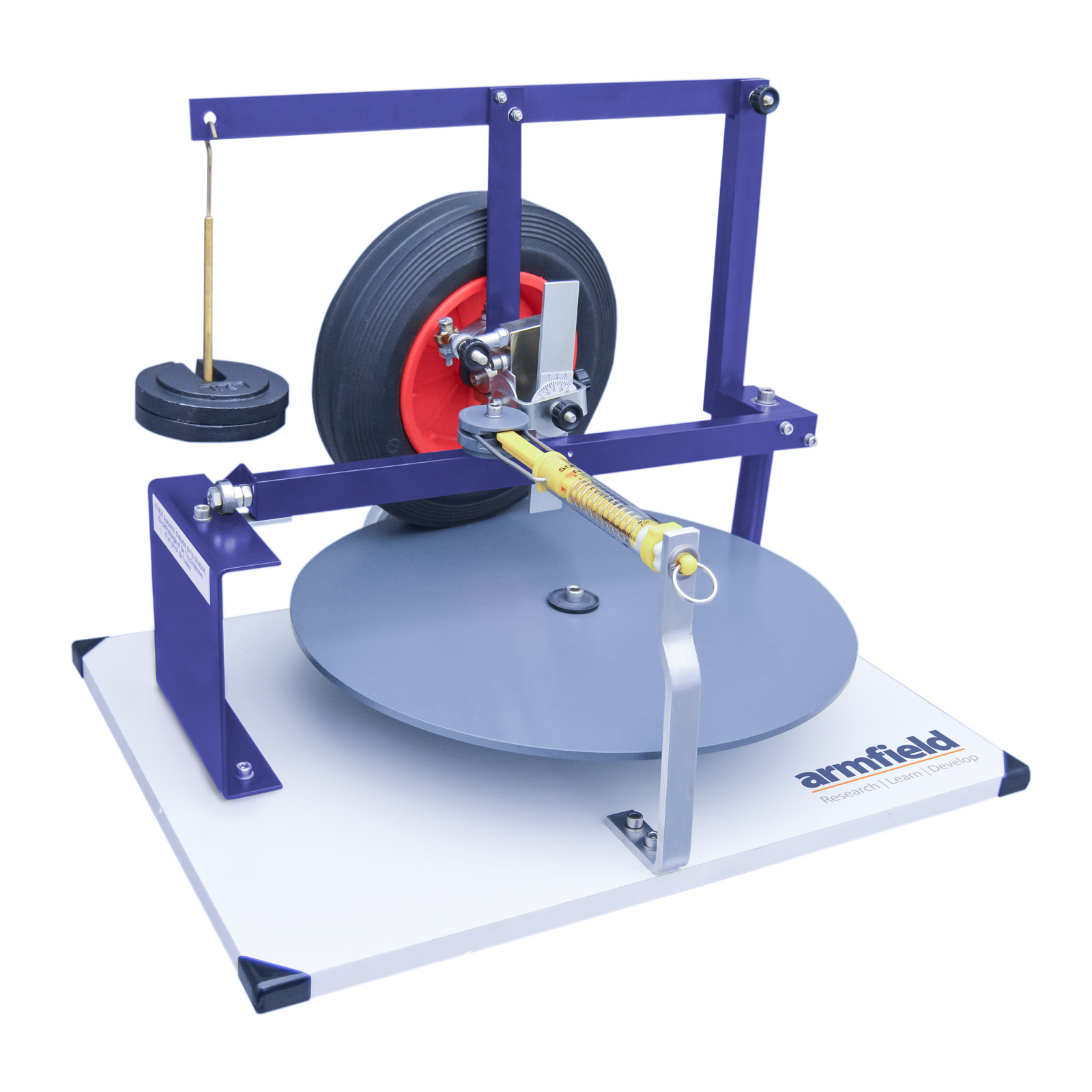
Castor, Camber and King Pin Inclination
20 เมษายน 2566
ผู้ชม 166 ผู้ชม
DESCRIPTION
Students often experience difficulty in understanding the principles of front wheel set-up on road vehicles, since the geometry involves angles in three dimensions.
This apparatus shows precisely how castor, camber and king pin inclination are set up and how centre point steering is achieved.
A wheel and means of altering the offset are included so that everything affecting centre point steering can be varied. Vernier scales measure the castor angles and king pin inclination, while toe in and camber angles are measured from a longitudinal and vertical datum in the way in which they would be determined on a real vehicle.
A hand driven rotating turntable simulates a rolling road, and may be turned at a slow enough speed to study wheel stability under running conditions.
EXPERIMENTAL CONTENT
- To show how castor, camber and king pin inclination are set up
- To show how the steering linkage is related to toe-in
- To demonstrate the effect of wheel offset
- To observe the dynamic stability of the wheel under running conditions
- To measure the forces on the steering link
- To show how the weight of the car affects self centring
TECHNICAL SPECIFICATIONS
- Ø250mm Running wheel
- Ø380mm Turntable
- ±5° Vernier scale
- ±40° Protractor scale
FEATURES & BENEFITS
- Bench top unit simulating vehicle front steering arrangement
- Very visual unit
- Rolling road can be turned manually
- Variation of Castor, Camber, King Pin Inclination
- Accurate adjustment using protractors and flexible joints
- Many adjustments can be made to vary results







